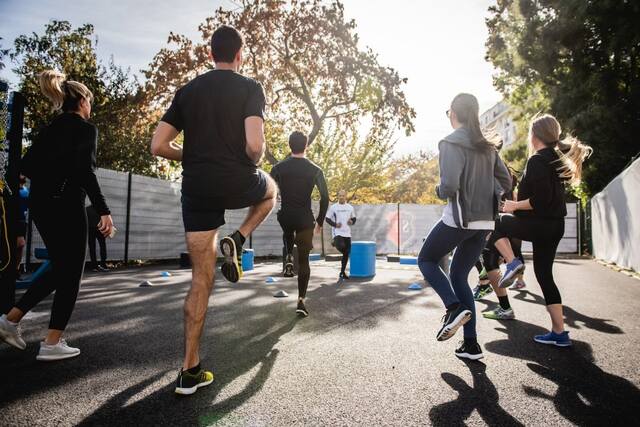Building a cohesive team is akin to orchestrating a symphony, where every member plays a unique note, contributing to the creation of harmonious music. While individual skills and expertise are vital, the ability to collaborate as a unified force can elevate an organization to new heights. This is precisely where effective team-building exercises come into play. In this in-depth guide, we’ll delve deeply into the art of constructing cohesive teams through meticulously planned and executed team-building exercises.
The Essence of Cohesive Teams
Before we embark on our journey through the realm of team-building exercises, let’s first grasp the essence of cohesive teams. Cohesion transcends mere cooperation; it’s about cultivating an environment where each team member feels valued, understands their role, and is devoted to a shared goal. Cohesive teams are characterized by trust, seamless communication, and a collective sense of purpose. Team-building exercises serve as the catalyst for nurturing these attributes.
The Strategic Approach
Effective team-building isn’t a one-size-fits-all endeavor. It requires a strategic approach tailored to the unique dynamics of your team. Here are the key steps to strategically plan your team-building efforts:
Identify Team Goals and Objectives
To begin, you must define clear and specific goals and objectives for your team. What are you trying to achieve? Is it enhancing communication, refining problem-solving skills, or fostering better collaboration? Identifying precise objectives will guide your selection of team-building exercises.
Understand Your Team’s Dynamics
Every team has its distinct personality, shaped by the backgrounds, personalities, and roles of its members. To gain insight into your team’s strengths, weaknesses, and communication styles, consider conducting assessments, surveys, or one-on-one interviews. This information will prove invaluable in choosing exercises that address your team’s specific needs.
Choose the Right Exercises
The world of team-building exercises is vast, offering a plethora of options, from icebreakers to problem-solving challenges. The key is to select exercises that align with your team’s goals and cater to their preferences. Be creative and mix different types to maintain engagement and enthusiasm.
Plan the Timing and Frequency
Team-building is a continuous process, not a one-time event. Develop a well-thought-out schedule that includes regular team-building sessions. The timing should be strategic, such as after completing a significant project, to address specific issues, or as part of a quarterly or annual retreat.
Types of Team-Building Exercises
Now, let’s explore various types of team-building exercises that can be tailored to suit your team’s unique needs:
Icebreakers
Icebreakers are perfect for new teams or when introducing new members. These exercises are designed to foster rapport, reduce tension, and create a comfortable atmosphere. Classic icebreakers include “Two Truths and a Lie,” where team members share two true statements and one false one, and “Human Bingo,” a game that encourages participants to learn fun facts about their colleagues.
Communication Challenges
Effective communication is the linchpin of a cohesive team. Communication exercises can include activities like the “Broken Telephone” game, where a message is passed through the team, highlighting the importance of clear and concise communication. Another valuable exercise is “Active Listening Pairs,” where team members practice listening actively to one another.
Problem-Solving Activities
Problem-solving exercises help teams develop critical thinking and collaboration skills. Consider activities like the “Escape Room” challenge, where team members work together to solve puzzles and escape within a set time. This exercise encourages creative problem-solving, teamwork, and effective communication.
Trust-Building Exercises
Trust is the foundation of team cohesion. Trust-building exercises, such as the “Trust Fall,” where one person falls backward and is caught by their team members, or the “Blindfolded Obstacle Course,” where team members guide a blindfolded colleague through a course, encourage team members to rely on one another and build trust through vulnerability.
Role-Playing and Simulations
Simulations immerse teams in real-world scenarios, allowing them to practice decision-making and problem-solving. For instance, a business simulation can help a sales team understand market dynamics and adapt their strategies. Role-playing exercises, such as conflict resolution scenarios, enable team members to hone their interpersonal skills.
Implementing Team-Building Exercises
The success of team-building exercises hinges on their effective implementation. Here’s how to ensure your exercises are not only engaging but also impactful:
Invest in Personalized Paraphernalia
Before your team-building session, invest in personalized items to make participants feel special and valued. Paraphernalia can be anything from team T-shirts and caps to custom notebooks or mugs. You may even order custom windbreakers from Good Ink if you’re planning an outdoor activity. Investing in personalized items that represent your team’s identity will foster a sense of unity.
Provide Clear Instructions
Begin each exercise by explaining the rules and objectives with utmost clarity. Ambiguity can lead to confusion and frustration, negating the purpose of the exercise. A well-articulated briefing sets the stage for a productive session.
Encourage Reflection
After each exercise, facilitate a discussion where team members reflect on what they learned, their individual strengths, and areas for improvement. This self-awareness is key to personal and team growth. Encourage open and honest sharing, fostering a culture of continuous improvement.
Adapt and Evolve
As your team evolves and grows, so should your team-building exercises. Be open to feedback and adapt your strategies accordingly. What worked well in the past may need modification to remain effective as your team’s dynamics change.
Foster a Safe Environment
Team-building exercises can sometimes bring out vulnerabilities. Create a safe and judgment-free space where team members feel comfortable sharing their thoughts and feelings. Trust and open communication are nurtured when individuals feel secure in expressing themselves.
Measuring the Impact
To assess the effectiveness of your team-building efforts, consider the following metrics:
Team Satisfaction
Regularly survey your team members to gauge their satisfaction with team-building activities. Are they finding value in these exercises? Are they enjoying them? Feedback from participants is invaluable for fine-tuning your approach.
Performance Metrics
Monitor key performance indicators (KPIs) to determine if there are improvements in productivity, collaboration, and problem-solving within your team. Analyzing data can provide concrete evidence of the impact of your efforts.
Observations and Feedback
Pay attention to how team members interact on a day-to-day basis. Solicit feedback from team leaders, managers, and colleagues to gain insights into whether trust, communication, and collaboration have improved. Personal anecdotes and observations can offer qualitative data that complements quantitative metrics.

Building cohesive teams is a nuanced art that demands patience, dedication, and the right tools. Effective team-building exercises serve as the catalyst that transforms a group of individuals into a high-performing team. By strategically planning and implementing these exercises, you can create an environment where trust, communication, and collaboration flourish, ultimately leading to the success of your organization. So, get ready to embark on this rewarding journey of team cohesion, and watch your team’s performance soar to new heights. Remember, a harmonious symphony of talent is within your grasp, waiting to be composed and celebrated.

